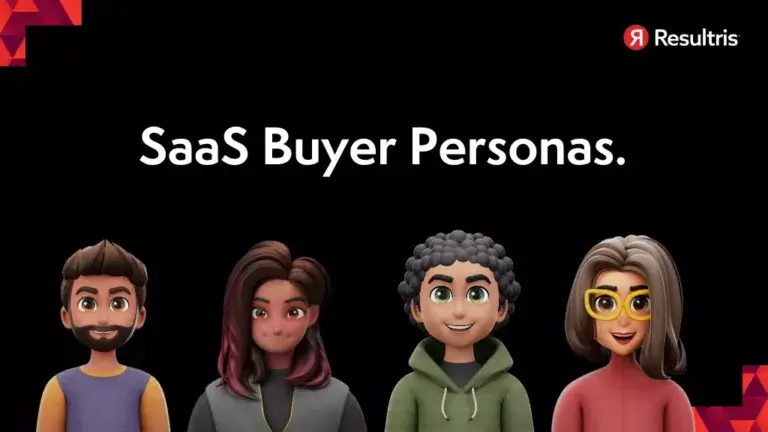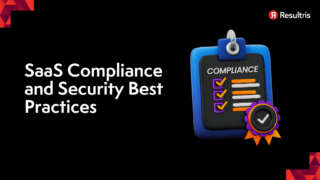

Written by: Tim Eisenhauer
Last updated:

Understanding who your customer is, what they desire, and how they think, is the cornerstone of any successful marketing strategy. Today, we’ll focus on the world of Software as a Service (SaaS), and how you can uncover your SaaS buyer personas.
Before we dive into the mechanics of SaaS buyer persona creation, let’s demystify an important term— “Understanding SaaS customer behavior”. Sounds quite scholarly, right? Well, it’s simpler than it sounds. It refers to getting a handle on what your customers want, why they want it, and how they go about getting it.
Picture this: You’re a detective, and your customers are the case you need to crack. You’ll gather clues from their digital footprints—website visits, social media interactions, product reviews, and more—to understand their habits, preferences, and pain points.
Creating a buyer persona isn’t akin to conjuring a mythical creature from thin air. You can’t just decide your ideal customer is a 30-something wizard with an affinity for spell-check software (unless you’re in a very niche market).
Instead, you need to gather real data from various sources. This includes your existing customer database, market research, social media analytics, and direct customer interviews or surveys.
Now, let’s talk about the basic components of a buyer persona:
Building this persona may feel like you’re playing Dr. Frankenstein, but rest assured, this is a tried and tested marketing strategy.
Let Resultris help! Our expert team can simplify the process and guide your path to effective persona-driven marketing.
Now that we have the framework of our buyer persona, it’s time to add the finishing touches. This is where we breathe life into our Frankenstein monster and turn it into a functional tool for understanding and targeting your SaaS customers.
First, demographics and job specifics. They might seem surface-level, but they can provide significant insights. For instance, a CTO in a large corporation might prioritize security and scalability in a SaaS product, while a startup owner might look for affordability and user-friendliness. The key here is not to make broad assumptions but use real data to fuel your insights.
Identifying your persona’s goals and challenges is like getting an X-ray of their heart. It reveals what drives their actions and decision-making process. For instance, if a common goal among your customers is to automate repetitive tasks, your SaaS content marketing should highlight how your product can save time and increase efficiency.
The challenges are equally important. If your customers struggle with adopting new technology, your content should focus on ease of use, customer support, and user training.
This is where we get into the psychology of your SaaS buyer persona—what they value and fear. If your SaaS caters to
environmentally conscious businesses, your marketing should emphasize your sustainability efforts. Likewise, if a common fear is data loss or security breaches, underscore your stringent security measures.
Finally, understanding how your persona likes to shop will shape your sales strategy. If your target audience relies heavily on reviews and testimonials, make sure these are readily available and easy to find. If they prefer personalized demos or trials, ensure your sales process accommodates this.
We’re about to get practical here. The product in question is an “Enterprise Chatbot for Employees”. This AI-powered marvel is designed to streamline internal communication, automate repetitive tasks, and make information more accessible for employees in large organizations.
Let’s roll up our sleeves and dissect how to construct two potential buyer personas for this tech powerhouse.
POWER psychology tip. You need to know this:
Let’s tap into a universal truth about our audience. There’s a fundamental human psychology at play that every SaaS founder or marketing pro should remember:
Each and every one of your potential customers has an innate desire to look good in front of their coworkers. They are continually seeking solutions that not only solve their pain points, but also enhance their status, credibility, or reputation in their professional community.
This is a key piece of the puzzle. Your SaaS solution is not just a tool—it’s a potential badge of honor, a symbol of innovation and efficiency that your buyer persona can wear proudly. When your solution makes your customers look like the heroes of their story, you’ve hit the sweet spot.
Oh, and there’s another important factor to consider!
These decision-makers are often not spending their own money. They’re usually employees of a company, tasked with finding solutions and given a budget to do so.
This often leads to decision-making that may seem irrational or perplexing from your perspective. Why didn’t they choose us? Why did they opt for that?
However, if you scratch beneath the surface, you’ll often find a common thread: the safe option. More often than not, the decision-makers lean towards larger, more established companies. It’s a ‘better the devil you know’ scenario.
So, what does this mean for you, particularly if you’re a SaaS startup?
Well, the easy answer is to become the safe option. To do this you’re going to have to work smart. You’ll need to ensure all your ducks are in a row, from offering top-notch customer service to proving the value and reliability of your product. Only then can you challenge the notion of the ‘safe option’ and position your solution as a worthy contender.
Why do people choose the safe option? Because they want to look good.
One more pro tip. Your buyer, or the ultimate decision maker, may not be the person you’re talking to.
So, you’ll want to take this into consideration when defining your SaaS buyer personas. If you’re targeting the HR Manager selected to source an HR solution, who is their boss? What role do they play in the process?
Now that we’ve grasped these important principles, let’s dive into constructing two potential buyer personas for our enterprise chatbot solution.
Whether it’s Google Analytics, customer surveys, social media insights, or good old-fashioned sales team feedback, gathering data about your customers is your first step. Remember, real information should guide your persona creation, not assumptions or wishes. Talk to your prospects and customers.
Eric is a middle-aged HR manager in a large multinational corporation with 500+ employees. He’s tech-savvy, constantly looking for innovative solutions to streamline HR tasks and improve employee engagement.
Demographics and job specifics:
Goals and challenges:
Values and fears:
Shopping preferences:
Tina is the Chief Information Officer (CIO) in a rapidly growing startup. She’s responsible for implementing technology solutions that enhance productivity, reduce costs, and support the company’s growth.
Demographics and job specifics:
Goals and challenges:
Values and fears:
Shopping preferences:
By understanding and addressing the needs, goals, and fears of “Efficient Eric” and “Tech-savvy Tina,” you’ll ensure your Enterprise Chatbot meets your target audience’s needs and helps you outshine your competitors.
By now, you should have a comprehensive SaaS buyer persona in your hands. But what’s next?
This persona is your north star, guiding your content creation, blogging strategy, product development, pricing, sales process, customer service, and everything in between. It keeps you connected with your target audience and their needs, ensuring your SaaS company doesn’t just survive but thrives.
Remember, identifying your SaaS buyer persona isn’t a one-and-done task. As your business evolves, so will your customers. Regularly revisit and refine your personas to keep your understanding fresh and relevant.
So, there you have it—a deep dive into the art and science of creating your SaaS buyer persona.
Now, you’re not just selling to an abstract ‘customer’ but to ‘Startup Steve’ or ‘CTO Catherine’, making your marketing efforts more targeted, personalized, and effective.
Happy persona-creating!




